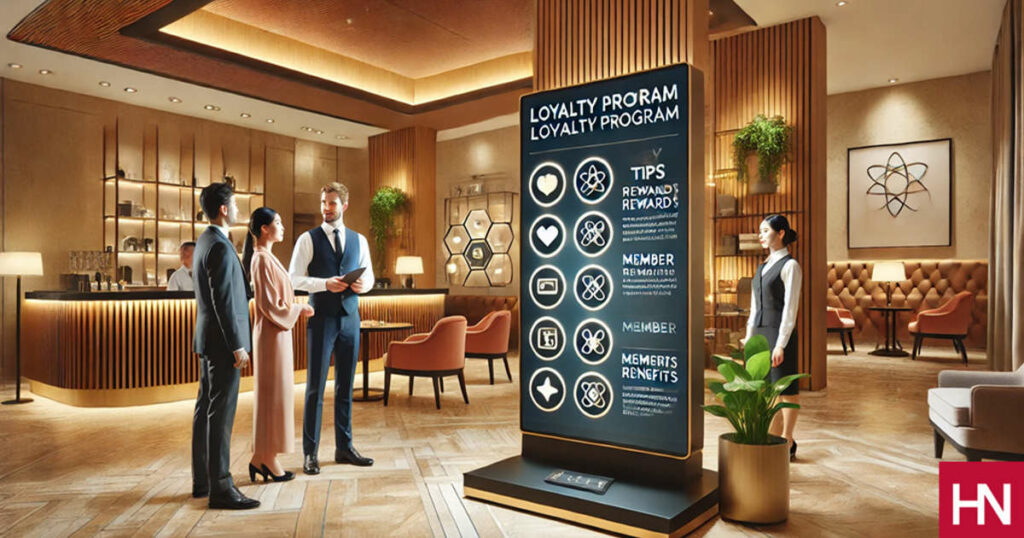4 tips for building a modern loyalty program

Does your loyalty program need a little zhuzhing up? In case you missed the memo, points-based loyalty programs just aren’t as exciting as they once were. Travelers are expecting more from hotel brands, with 79% of Gen Z and Millennial travelers saying they care more about the experience than the cost of the trip.
Loyalty programs are one strategy for building a steady stream of repeat business. Returning guests tend to have a lower cost of acquisition, are more likely to book direct, and may become vocal promoters of your brand. This all impacts your bottom line in the form of increased revenue capture and NOI. And most importantly, loyalty programs are an opportunity to deepen your relationships with your guests and provide another touchpoint that surprises and delights.
Points, though once the industry standard, no longer capture guests’ attention. Hoteliers need to adapt their loyalty programs to changes in guest preferences if they want to continue reaping the business rewards that come with a dedicated base of repeat guests. With digital transformation nipping at the heels of hoteliers and AI-influenced travel planning making its way into the guest booking journey, there’s a lot to keep up with, especially when it comes to guest preferences.
To match the industry’s pace, making guests feel seen and known is the best strategy for attracting and retaining them to your loyalty program. That’s why your loyalty program needs to employ guest data such as spending patterns, stay history, folio data, data on ancillary spending (e.g., golf, spa, and restaurants), and more to get a complete picture of who your guests are and what they are looking to get out of their travel experience.
Right now, a Customer Data Platform (CDP) is the only technology with the power to collect and activate all of this valuable data from across the guest journey. Data you can use to create personalized rewards that resonate.
So, where do you start? We’ve got four tips for building a loyalty program that your guests will love.
1. Know the who
You know the saying, the who, what, when, where, and how?
There’s a reason it starts with the who.
If you don’t know who your guests are — their preferences, habits, and behaviors — then how can you personalize their loyalty rewards?
Start by researching your repeat guests. Are they mainly business travelers? Are they mostly booking family vacations? Consult your guest profiles to see what channels guests book on and how often they book so that you can target your most profitable members. For example, use data from your folio and restaurant systems to identify those who are likely to take advantage of F&B offers.
This is your starting point as you identify your loyal guests through micro segments, allowing you to offer program rewards that each guest segment will enjoy.
Your segments are the who
of your loyalty program. Instead of manually working to uncover their identity across multiple channels and piecing together guest data, identity resolution is a feature of best-in-class CDPs that automatically merge your guest data from different sources into a unified profile.
Identity resolution uses AI and machine-learning models to unmask OTA emails, de-duplicate profiles, and cleanse your data for an accurate view of each guest. With unscrambled data and accurate guest profiles, you can see who your loyal guests really are, and target them based on their booking behavior and stay preferences. This makes the process of personalizing loyalty rewards straightforward so that you can send relevant offers. Let’s be real, as appealing as this may be to some, not every guest segment wants a couples massage and seaside excursion as a loyalty reward.
Just take this campaign from Royal Garden Hotel. They segmented by guests who had upcoming stays the next week and offered a 25% discount to one of their restaurants. What do campaigns like this have to do with your loyalty program? Well, the guests who took advantage of these offers are revealing their preferences, so now when you assign them rewards, you’ll know that food and beverage offers resonate!

2. Ditch the points – go for experiences
If you’re thinking of structuring your loyalty program around points, maybe take a step back. Sure, points were once considered an easy way to gamify loyalty, with guests competing to level up their points score. But in addition to being old-fashioned, points lack room for the personalization of loyalty rewards.
But experience-based rewards? That opens your hotel to a whole new opportunity to apply your guest data for personalization. Rewarding guests with experiences based on their preferences provides additional value to your guests. Slowly accumulate 500 points to reach a higher tier to access perks? Or take a rooftop yoga session with a post-flow sea-salt spa facial, available immediately? We’ll let you decide which reward will resonate more with your loyal guests who consistently use your spa amenities.
Whether it’s guest data from your spa, restaurant, golf course, or overall room spend, every interaction provides data you can apply to your loyalty program to create an experience-based reward for your guests.
3. Follow the trends. Seriously.
If you’re paying attention to your database, you already know that guest preferences can be pretty dynamic. You know what can also be pretty dynamic? Travel trends.
2024 has been filled with unique guest expectations when it comes to their travel plans. From searching for quiet spaces and places to leaning into ultra-luxury with hedonic and highly sophisticated experiences like sky bars.
What’s hot
in food, music, and culture will impact your guests’ preferences. So it’s crucial to devise a loyalty program that is flexible and allows you to change things up as your guests gravitate to the next best thing.
Doing a little bit of market research and consulting the data from your marketing campaigns can give you a better idea of what guests are interested in. What was the open rate like for your email announcing new pickleball courts and instructor classes? How many times did guests click the link in an email promoting restaurant dinners with sustainably grown produce?
For Posthotel Achenkirch, they tapped into wellness specials and appealed to nature lovers because locals valued those experiences. And their hotel was right to follow the trends, as this campaign drove 414 booked room nights.
Take a look.


4. Measure and adapt
Something that should be baked into your loyalty program is how you measure progress so that when you reach the end of the month, the end of the quarter, or the end of the year, you have a clear indication of how successful the program has been.
Consider setting KPIs for your loyalty program to ensure it performs well and aligns with your business goals. Metrics like acquisition and retention rates are a good start, but don’t forget to audit what rewards your guests took advantage of the most. These data points can inform the adjustments you’ll make to fit your guests’ needs.
48% of business travelers and 30% of leisure travelers value loyalty benefits the most when it comes to their preferred hotel brands, so make sure yours is living up to their hype. Because loyalty programs should live and breathe. They need to evolve, or they’ll end up like your dad’s dusty loyalty card.
Guests are unique, so make your loyalty program match
Let’s say that you’ve conquered one of the hard parts — you’ve generated a database full of loyal guests. Each one of those guests is unique, with their own set of stay preferences and travel goals. Creating a loyalty program that is just as dynamic and unique as your guests is the other hard part. But the task isn’t as daunting if your strategy includes a Customer Data Platform because you have the data you need to identify and target your loyal guests. You can offer them rewards that go beyond points and speak to the root of the guest experience. And that’s a win for everyone.
About Revinate
Revinate empowers hoteliers to directly connect with their guests.
Our Guest Data Platform and communication solutions unlock revenue for hoteliers and put them in control of the full guest experience — initial research, booking, check-in, throughout the stay, and even after check out — all via the communication channels that guests prefer, whether it’s voice, text, email, or web.
More than 12,000 hotels globally bank on Revinate to drive direct revenue and deliver delightful guest experiences.
Ask us how we do it. Visit our website to get a demo.
Recent Posts
- Daher Kodiak 900 aircraft recieves Brazilian airworthiness certification
- 20-year-old pilot wins $2.4M Hawker 400XP in MrBeast challenge
- NetJets partners with Starlink to to bring high-speed connectivity to fleet
- Cutter Aviation names Slava Levchenko as General Manager of Phoenix MRO Facility
- Textron Aviation installs new art display at Kansas Career and Learning Center







Recent Comments